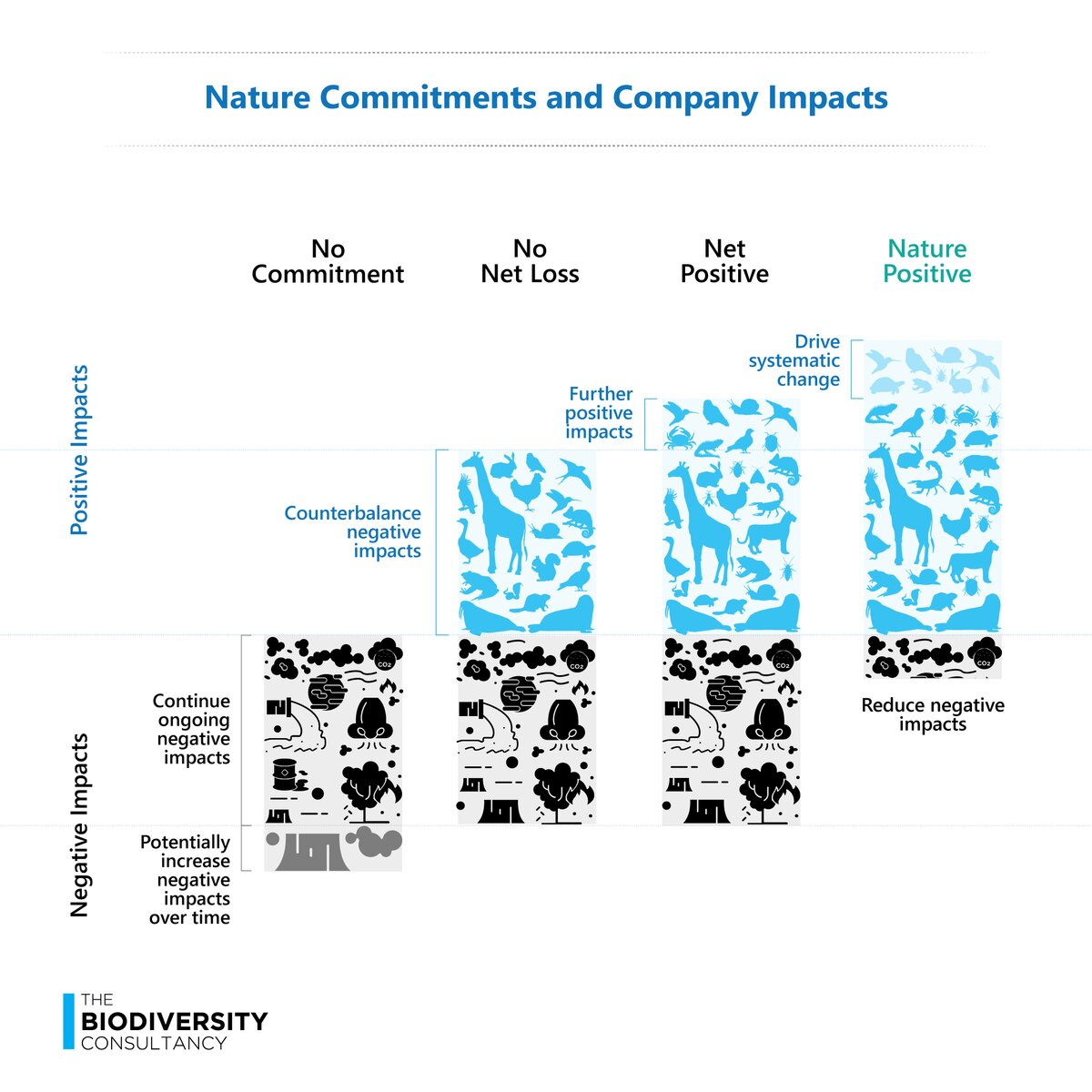Demystifying corporate nature commitments
Dr Hollie Booth, Strategic Director, Nature Strategies, explains the different levels of ambition companies can adopt to contribute towards a Nature Positive future.
Increasingly, the term ‘Nature Positive’ is making its way into conversations about corporate nature commitments. ‘Nature Positive’ is a fantastic rallying cry, that can inspire ambitious corporate action. Importantly, ‘Nature Positive’ encapsulates the societal objectives of halting and reversing nature loss and so is becoming the new norm for framing nature commitments.
A corporate commitment inspired by ‘Nature Positive’ differs from the ‘No Net Loss’ or ‘Net Gain’ concepts with which companies may be more familiar. Here, we offer practical explanations of each concept, drawing upon the latest thinking.
Companies can navigate these different terms by understanding the different levels of ambition they imply.
Levels of ambition: Nature Positive, Net Gain or No Net Loss
The terms ‘Nature Positive’, ‘Net Gain’ and ‘No Net Loss’ each convey differing levels of ambition to increase positive impacts on nature and/or reduce negative impacts (Figure 1). Negative impacts can include placing pressures on biodiversity (e.g., water use, pollution, and land use), whilst positive impacts can include restoring natural habitat in and around your company’s operations.
Figure 1: Graph to show the relationship between negative and positive impacts of an individual company for a given year under different Corporate Nature Commitments. Negative and positive impacts are set against the baseline of the No Commitment scenario, whereby on-going and new negative impacts continue year-on-year.
‘Nature Positive’ is the most ambitious concept. Drawing on the Global Biodiversity Framework, and definitions from the Nature Positive Initiative, IUCN and others, a commitment inspired by the Nature Positive concept implies completing all the following actions for the biodiversity component of nature:
-
Actively reduce negative impacts compared to a baseline year (e.g., 2020) and seek where feasible to create no new negative impacts compared to the baseline period. For example, a company could commit to converting no natural habitats and commit to reducing their land use footprint compared to the baseline year.
-
Counterbalance any remaining unavoidable negative impacts since the baseline year with equivalent positive impacts*. Companies may also choose to create additional positive impacts that account for their historical negative impacts that have accumulated since the company was established.
-
Partner with others to drive transformative change across land/seascapes, industry and society.
Whilst ‘Nature Positive’ is the most ambitious and most aligned with societal goals, some companies may also be considering other levels of ambition based on the still-challenging concepts of ‘Net Positive’ and ‘No Net Loss’:
-
‘Under a ‘Net Positive’ approach, new and on-going negative impacts can continue, or even increase, compared to the baseline. However, these negative impacts must be counterbalanced by positive impacts, over and above the negative impacts. ‘Net Positive’ thus only includes action 2 of the ‘Nature Positive’ concept.
-
‘No Net Loss’ is like ‘Net Positive’, except that the positive impacts only need to exactly counterbalance the negative impacts, and not go any further.
Both ‘Net Positive’ and ‘No Net Loss’ might be more suited towards companies who are taking their first steps on their biodiversity journey and focusing on the parts of their value chain where they have significant operational control over the activities causing their largest impacts.
The new norm: Nature Positive
Companies are increasingly recognising the value of addressing nature loss to avoid business risks and to build brand value. Embracing the 'Nature Positive’ concept as a framing for your nature commitments might seem ambitious, but it's crucial for the sustainability transition. We're here to help forward-thinking companies turn the 'Nature Positive' rallying call into action through our Nature Positive Program. It's time to set a higher standard, making ‘Nature Positive’ the new norm.
Join the movement
If you're intrigued and ready to develop an ambitious and evidence-based nature commitment for your company, please get in touch.
FOOTNOTE
*Actions to counterbalance negative impacts should meet good practice principles.
Categories: Consumer goods & complex value chains, Financial Services, Insight, Biodiversity Strategy, Nature Positive, No Net Loss and Net Positive Impact
Business & biodiversity
Join our mailing list to get the latest developments in business and biodiversity



